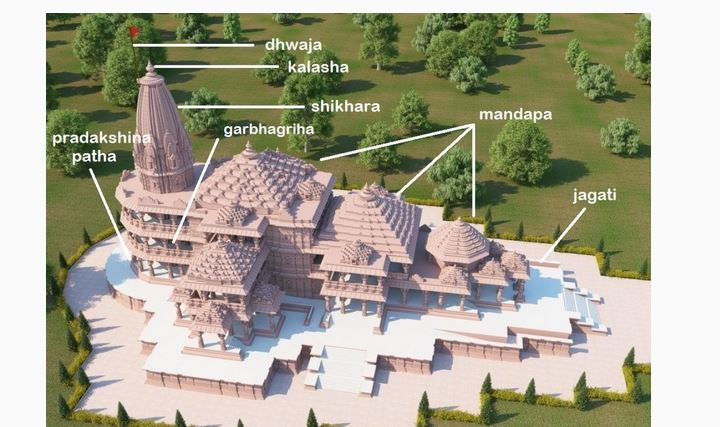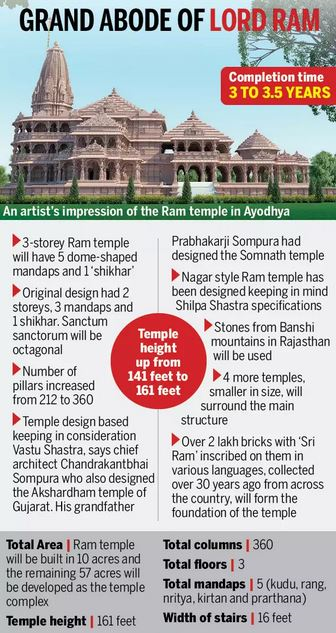The grand temple at Rama Janmabhoomi in Ayodhya will follow the Nagara style of temple architecture.
What is Nagara style of temple architecture?

The basic form of a Hindu temple contains the following architectural elements:
-
Garbhagriha – the small room where the principal deity/deities of the temple reside
-
Mandapa – the portico or hall at the entrance of the temple generally designed to house a large number of people
-
Shikhara – the mountain like spire which can have different shapes from pyramidal to curvilinear
-
Vahana – the mount of the main deity placed generally in line of sight from Garbhagriha
-
In this style, the temple is generally constructed on an upraised platform called Jagati.
-
Mandapas are present in front of the These are adorned with the Shikhara, the tallest one being above the Garbhagriha.
-
The shikhara over the mandapas in the pictures of the Ayodhya Ram temple can be seen having a square base, and a rectilinear outline.
-
This is called the phamsana-style shikhara. Note that the mandapa shikhara right at the entrance has an octagonal base.
-
There are different types of Shikhara found in Indian temples
-
A comparison with Khajuraho Vishwanath temple, also built in Nagara style, shows the similarity between the two.
-
Note that the main shikhara of the two are remarkably similar.
-
They rise upward in a curved pyramidal fashion, ending in a horizontal fluted disc called an Amalaka topped with a Kalasha. This is called the Latina-style shikhara.
